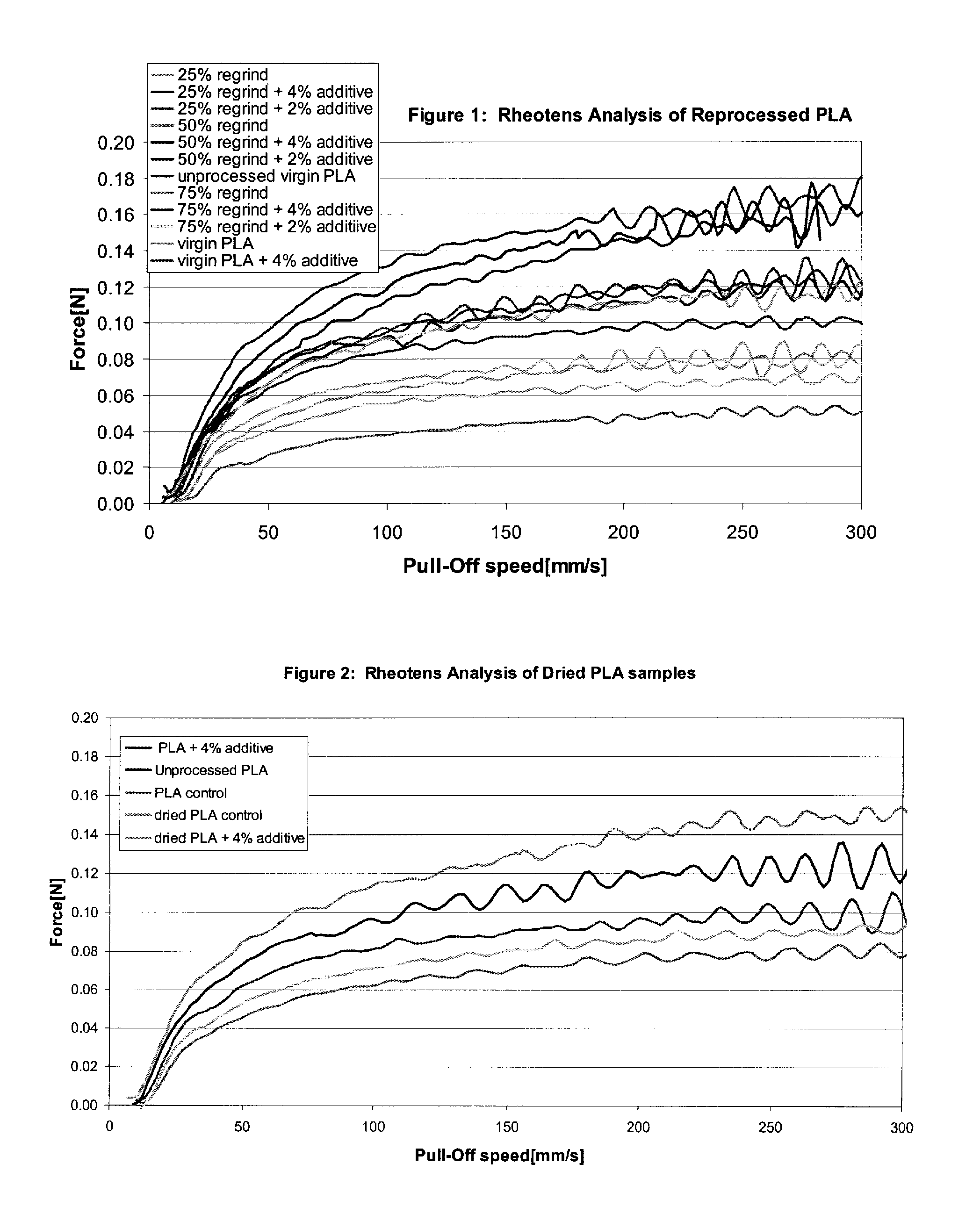Blends of biodegradable polymers and acrylic copolymers
- Summary
- Abstract
- Description
- Claims
- Application Information
AI Technical Summary
Benefits of technology
Problems solved by technology
Method used
Image
Examples
example 1
[0037]A blend of 95-99% polylactide containing 0 (comparative), 2, and 4 percent by weight of acrylic-methacrylic copolymer (additive) was formed by melt extrusion using a twin-screw extruder. The polylactide used was a mixture of virgin PLA resin with 0% (comparative)-75% reprocessed material. The processing temperature and melt temperature during extrusion were maintained above the melting temperature of polylactide (>152° C.) to ensure a homogeneous melt. Melt strength was assessed by capillary rheometer tied to a rheotens melt strength measurement device. Blends were extruded through the capillary at a fixed speed and accelerated using the rheotens. The force required to accelerate the extrudate and the speed of the accelerating rheotens device (pull-off speed) were recorded until strand rupture. These data are summarized in FIG. 1.
[0038]As expected, the addition of high amounts of regrind material results in a decrease in the melt strength of the resulting blend, and the additi...
example 2
[0041]In a separate experiment, a blend of 95-99% polylactide containing 0 (comparative) and 4 percent by weight of acrylic-methacrylic copolymer (additive) was formed by melt extrusion using a twin-screw extruder. For all samples, the polylactide used contained only virgin PLA resin. Some of the samples used resin that had been exposed to ambient temperature and humidity for 24 hours prior to processing. Other samples were dried in a circulating air desiccant dryer at 70° C. for a minimum of 4 hours immediately prior to extrusion. The processing temperature and melt temperature during extrusion were maintained above the melting temperature of polylactide (>152° C.) to ensure a homogeneous melt. Melt strength was assessed by capillary rheometer tied to a rheotens melt strength measurement device. Blends were extruded through the capillary at a fixed speed and accelerated using the rheotens. The force required to accelerate the extrudate and the speed of the accelerating rheotens dev...
PUM
| Property | Measurement | Unit |
|---|---|---|
| Percent by mass | aaaaa | aaaaa |
| Percent by mass | aaaaa | aaaaa |
| Percent by mass | aaaaa | aaaaa |
Abstract
Description
Claims
Application Information
 Login to View More
Login to View More - R&D
- Intellectual Property
- Life Sciences
- Materials
- Tech Scout
- Unparalleled Data Quality
- Higher Quality Content
- 60% Fewer Hallucinations
Browse by: Latest US Patents, China's latest patents, Technical Efficacy Thesaurus, Application Domain, Technology Topic, Popular Technical Reports.
© 2025 PatSnap. All rights reserved.Legal|Privacy policy|Modern Slavery Act Transparency Statement|Sitemap|About US| Contact US: help@patsnap.com

